
The study, from the IAB, demonstrates that brands should no longer expect a single, universal moment of greatest engagement.
While audience size might shift between different times of day, every daypart is an opportunity for “meaningful consumer connections”, the report states.
The study looks at the consumer journey through seven main content types:
- Episodic shows
- Music
- News
- Podcasts
- Short videos
- Social media
- Weather
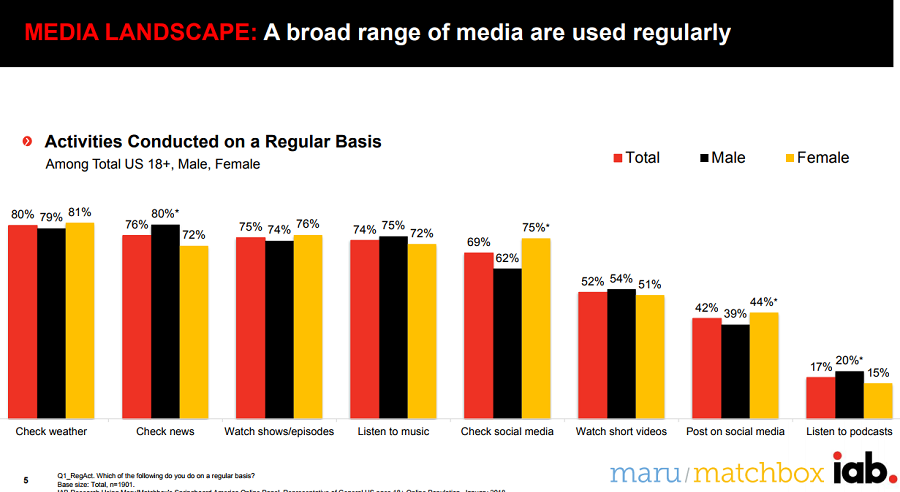
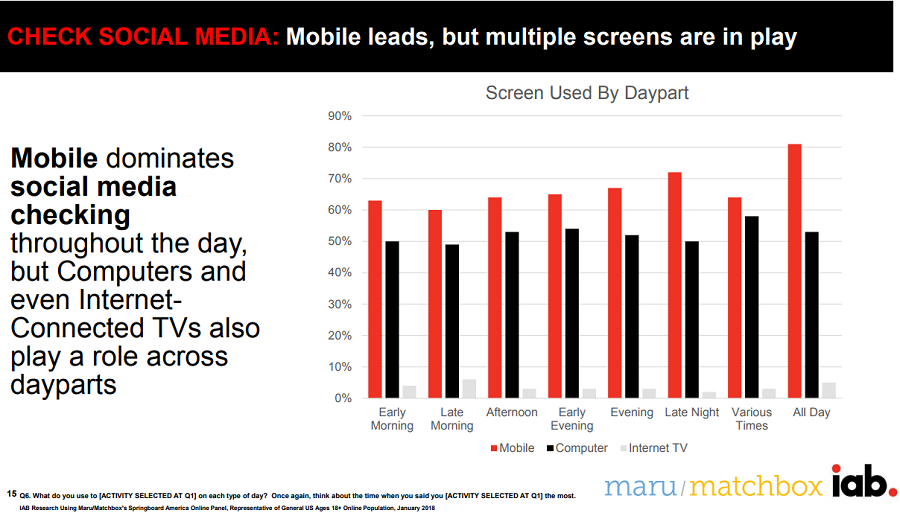
In each case, the report acknowledges audience density in specific dayparts, but then provides findings to reveal that “traditional reach” metrics miss the consumer perspective on the “need state” that drives them to turn to content at any given time.
Key takeaways:
- Diverse usage and times: Majorities of consumers who regularly engage media are doing so multiple times per day –this multi-engagement behaviour is occurring across content verticals from social media (both posting and checking), to music, to watching shows/episodes, to short videos, to news, weather, and podcasts.
- Needs are different across demographics: The need states driving these multiple engagements throughout the day vary, both by content vertical, as well as within content verticals as the day progresses.
- No longer a single prime time for mass market: Consumers are investing concentration in each of these engagements, and deriving value from them, creating a series of multiple, Personal Prime Times throughout the day. There is no longer a single, universal moment of greatest engagement. Now, every daypart is rich with opportunities for meaningful consumer engagement.
- Mobile leads the way: These engagements move across screens, both within and across dayparts, to match consumers’ specific needs and contexts. Mobile devices in particular are regular (and in some cases dominant) screens to which consumers turn to engage the content they need.
- New way to think about marketing: Each of these Personal Prime Times creates opportunities for marketers to add relevant value to consumers’ engagements by creating need state- and device-specific experiences throughout the consumer’s day.
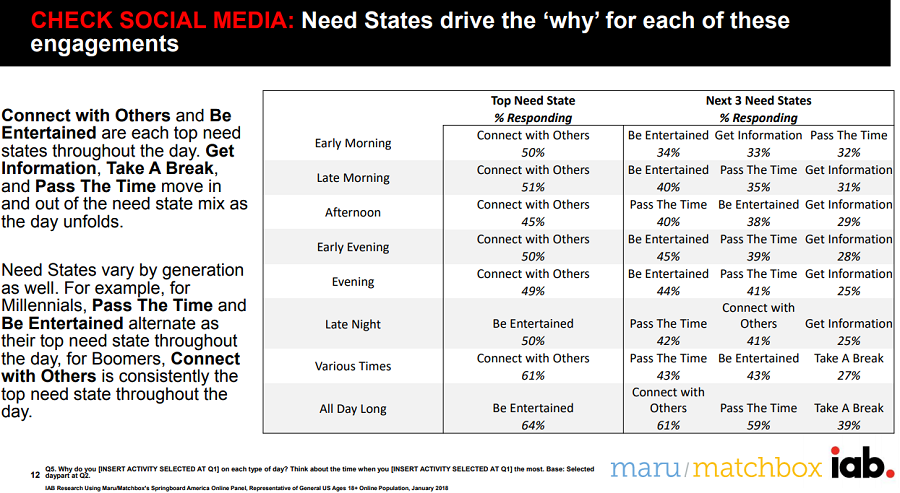
Diving in further, the research begins to take a range of consumer attributes (e.g., age, parental status) and device usage into account, to allow for better targeting across dayparts and platforms.
For example, while majorities of both Millennials and Boomers check social media regularly, the research identifies key differences between these two generations:
- 82% of Millennials report that they check social media during various dayparts or all day long, while 66% of Boomers report the same
- The top “need states” driving Millennials to check social media are to “pass the time” and “be entertained,” versus Boomers are looking to “connect with others”
- Device choice differs as well, with Millennials preferring mobile devices and Boomers opting to check social media on their computers
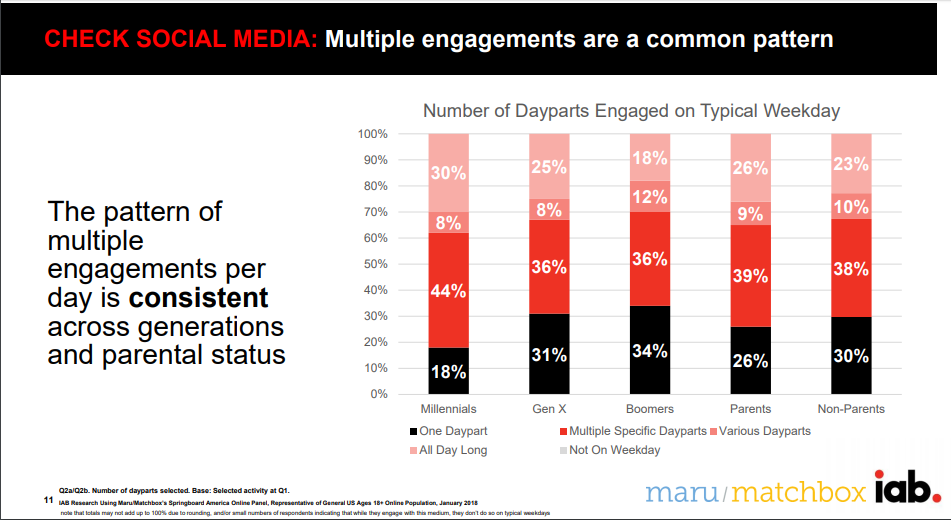
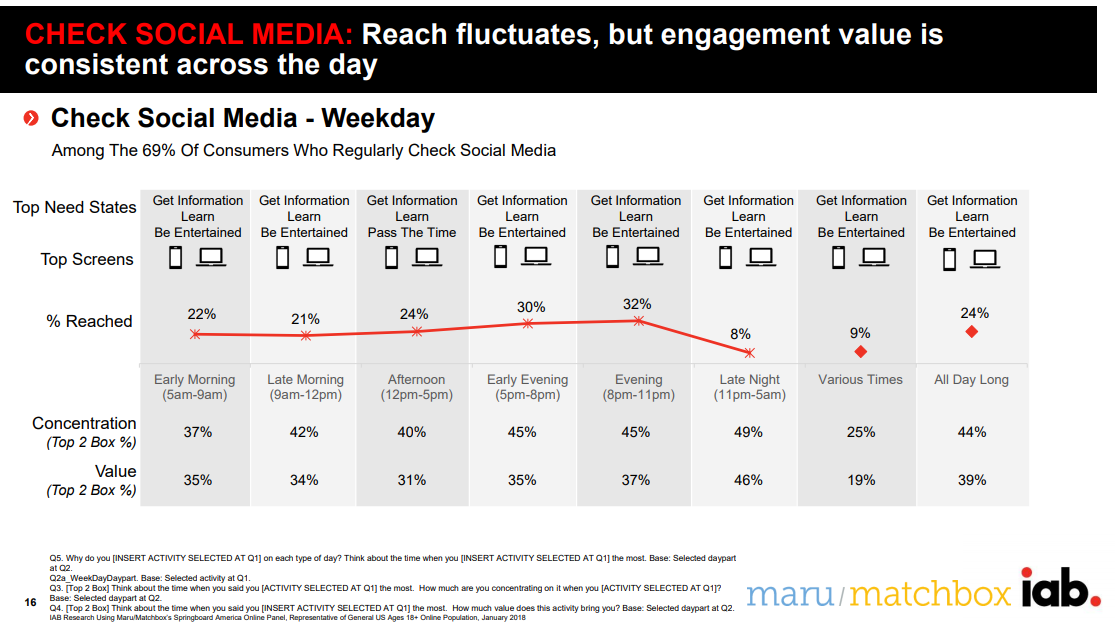
“In the age of ‘big data’ it makes no sense for advertisers to place their focus solely on big numbers, when they can take advantage of insights that can help them pinpoint the right customer, the right way, at the right time,” said Anna Bager, Executive Vice President, Industry Initiatives, IAB. “This report only scratches the surface of what contexts, drivers, and modes will lead to optimal brand engagement—and we plan to delve even further to shine a spotlight on opportunities for marketers and publishers.”
“Historically, as an industry, we have taken a crowd-level view of when the best time is to reach consumers, but this study shows brands a different path,” said Chris Kuist, Senior Vice President, Research and Impact, IAB. “These findings suggest that a more modern approach is to take a truly consumer-level view. When you do that, you can tap into a wealth of factors that can tailor marketing messages and creative to optimize for engagement.”
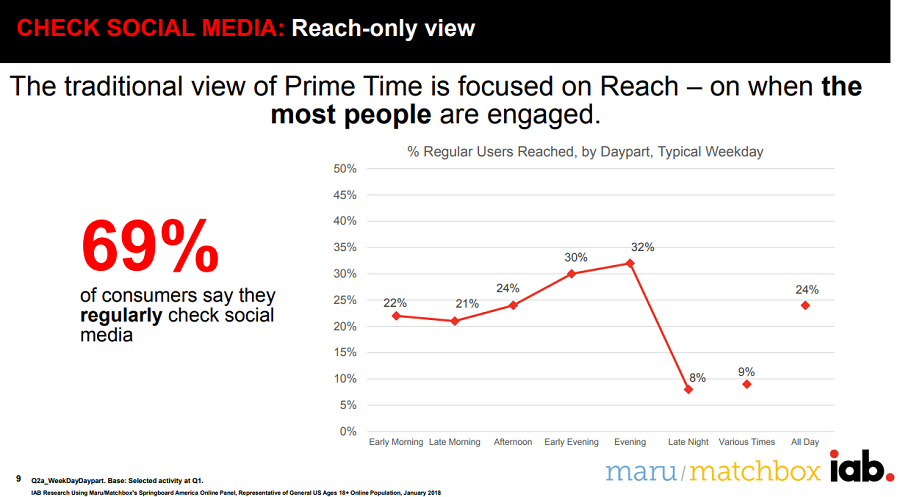
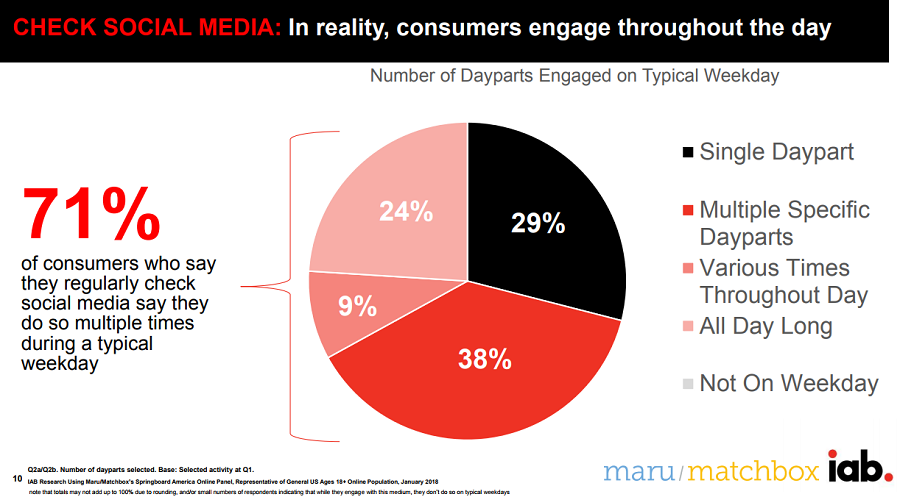
Action for brands
The IAB listed its key implications or brands when thinking about engaging people’s ‘Personal Primetime’:
• Consumers’ regular media diets cover a broad range of content, all throughout the day, multiple times a day. This creates multiple opportunities for connection, which can be tuned and sequenced for maximum engagement.
• Need States always drive consumer engagement, but they are not one-size-fits-always – across media or across time – and this is an opportunity to tap into what moves consumers across content and across the day, for more relevant and valuable engagements.
• Consumers are investing concentration in and deriving value from their media experiences all throughout the day – there is no down-time, and there are no ‘throwaway’ engagements. For brands, this means that opportunities for connection with consumers exist every time they engage with media. Leverage consumers’ persistent concentration to bring additional value to these engagements.
• Be aware of which screens are in play at what times, and tailor content to unlock each screen’s potential when it’s the consumer’s choice. Mobile devices are of particular importance across all content verticals and dayparts.
Media planning tips from our strategists:
- The idea of all advertising being based around the same “Prime Time” for talking to your audience (no matter who the audience was!) has long gone.
- The age of “on-demand” media and pull content channels means now audiences have “Personal Prime Times”.
- Audience use of multiple forms of digital media is getting more pervasive and more sophisticated – this latest research from the IAB starts to breakdown when, why and how people are engaging with their preferred digital channels.
- Use this latest free research to guide the questions you need to be having around media planning and thinking about the effectiveness of you planning around day of week and day parting.
- Find out on what screens and when your audience is likely to be posting on social media, catching up on their latest shows or checking the news.
“Personal Prime Time” was released at “IAB and dmexco @ Mobile World Congress” and is available for download here.
Methodology
The survey was fielded among Maru/Matchbox’s Springboard America online panel (~250,000 U.S. members), January 17 – 23, 2018. The total sample included 1,901 consumers ages 18+ in the U.S., representative by Census.
